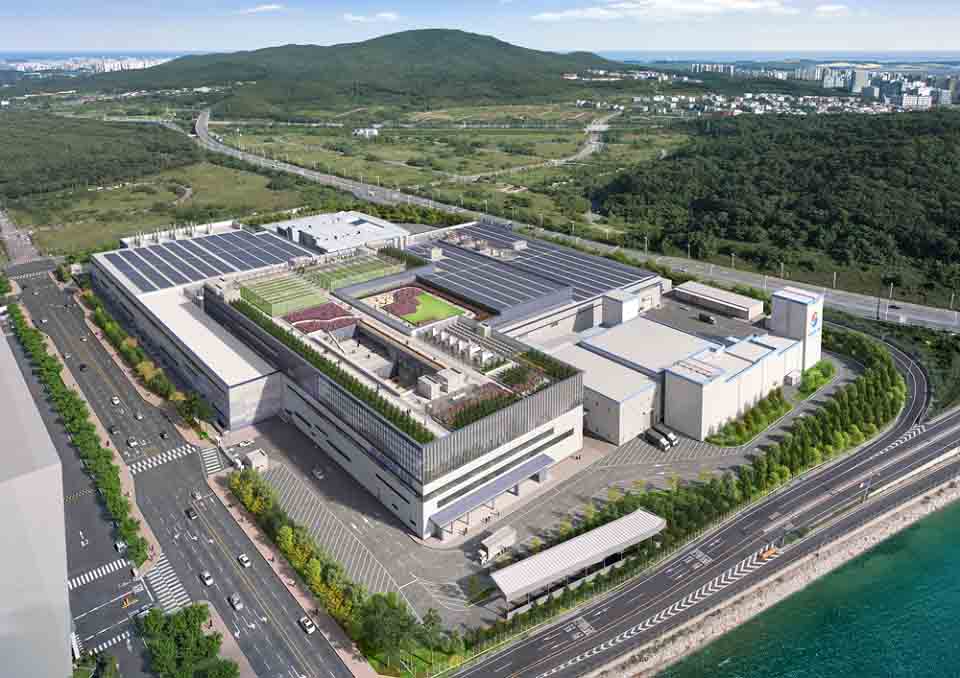Aerospace
Korean Air to open Asia’s largest aircraft engine MRO cluster

Korean Air has started building an aircraft engine maintenance cluster at Incheon International Airport in Unbuk. The facility is expected to be operational by 2027.
This new complex, which will be the biggest of its kind in Asia, will strengthen the airline’s capacity to maintain aircraft engines and secure its place in the aviation maintenance, repair, and overhaul (MRO) industry.
Over 140,000 square metres are divided into seven levels of the new engine maintenance facility. The 578 billion won facility is being built by Kolon Global, and it will be positioned next to the Engine Test Cell (ETC) that the airline has been using since 2016.
Engine maintenance was traditionally handled by Korean Air at its Bucheon facility, with additional final performance testing conducted at the ETC in Unbuk. By centralised all stages of engine maintenance at one location, the engine maintenance cluster will strategically consolidate and streamline this process, improving operational efficiency.
Additionally, Korean Air plans to greatly improve its capacity to service aircraft engines, increasing from 100 to 360 each year, and servicing a wider range of engine types. Six engine models are now overhauled by the airline: General Electric’s GE90-115B, CFM International’s CFM56, and Pratt & Whitney’s PW4000 and GTF.
Three additional engine models, including GE’s GEnx and CFMI’s LEAP-1B, are being added to the lineup as part of the expansion. Additionally, the prospect of maintaining Asiana Airlines’ engines—including the Rolls-Royce Trent XWB powering the Airbus A350—is being investigated by the carrier. In order to increase the competitiveness of the domestic aircraft MRO business and lessen reliance on foreign maintenance services, the new maintenance cluster is anticipated to create over 1,000 new jobs.

Aerospace
Boeing Transfers Rocket Stage to NASA, Paving Way for Human Moon Mission

Boeing has achieved a significant milestone by providing NASA with the second core stage of the Space Launch System (SLS) rocket.
This crucial component, crafted at NASA’s Michoud Assembly Facility (MAF), is set to propel the Artemis II crew into lunar orbit, marking humanity’s return to deep space after a 50-year hiatus.
The monumental Boeing-built rocket stage, the largest element of the Artemis II mission, will embark on a journey aboard the Pegasus barge, traveling 900 miles to NASA’s Kennedy Space Center.
Comparison of two legendary aircraft B777x vs B747 aircraft:Click here
Upon arrival, it will be meticulously integrated with other essential Artemis II components, including the upper stage, solid rocket boosters, and NASA’s Orion spacecraft within the iconic Vehicle Assembly Building. This intricate integration process is a vital step toward the eagerly anticipated Artemis II launch, slated for 2025.
“Boeing-built products helped land humankind on the moon in 1969, and we’re proud to continue that legacy through the Artemis generation,” remarked Dave Dutcher, vice president and program manager for Boeing’s SLS program. “Together, with NASA and our industry partners and suppliers, we are building the world’s most capable rocket and paving the way to deep space through America’s rocket factory in New Orleans.”
NASA, Lockheed Martin Reveal X-59 Quiet Supersonic Aircraft:Click here
The delivery of Core Stage 2 marks a significant achievement in the evolution of the SLS rocket. Towering over 200 feet and powered by four RS-25 engines, this core stage, coupled with two solid-fueled booster rockets, will generate a staggering 8.8 million pounds of thrust. This immense power is crucial to launching Artemis II and future missions into the vast expanse of space.
The SLS rocket stands unparalleled in its capability to transport both crew and substantial cargo to the moon and beyond in a single launch. Its extraordinary capacity will facilitate the delivery of human-rated spacecraft, habitats, and scientific missions to destinations including the moon and Mars, ushering in a new era of space exploration.
-

 Travel1 week ago
Travel1 week agoAir India to Expand US Operations with Three New Routes After a Decade
-

 Travel2 weeks ago
Travel2 weeks agoWhy We Should Avoid These Stamps in a Passport
-

 Airlines1 month ago
Airlines1 month agoInvestigations Reveal Fake Chinese Titanium in Boeing and Airbus Jets
-

 Tech4 weeks ago
Tech4 weeks agoChina’s CATL Plans 1,800-Mile Electric Plane Launch by 2027
-

 Airport3 days ago
Airport3 days agoTop 10 Largest Airports in the World by Size
-

 Aerospace4 weeks ago
Aerospace4 weeks agoChina’s Fighter Jets Turn Wings into Autonomous Drones
-

 Airlines4 days ago
Airlines4 days agoAir India Rolls Out A350s for Delhi-New York JFK and Newark Routes
-

 Defence3 weeks ago
Defence3 weeks agoBoeing Enhances Chinook with New Engines and Block II Upgrades at $96 Million







